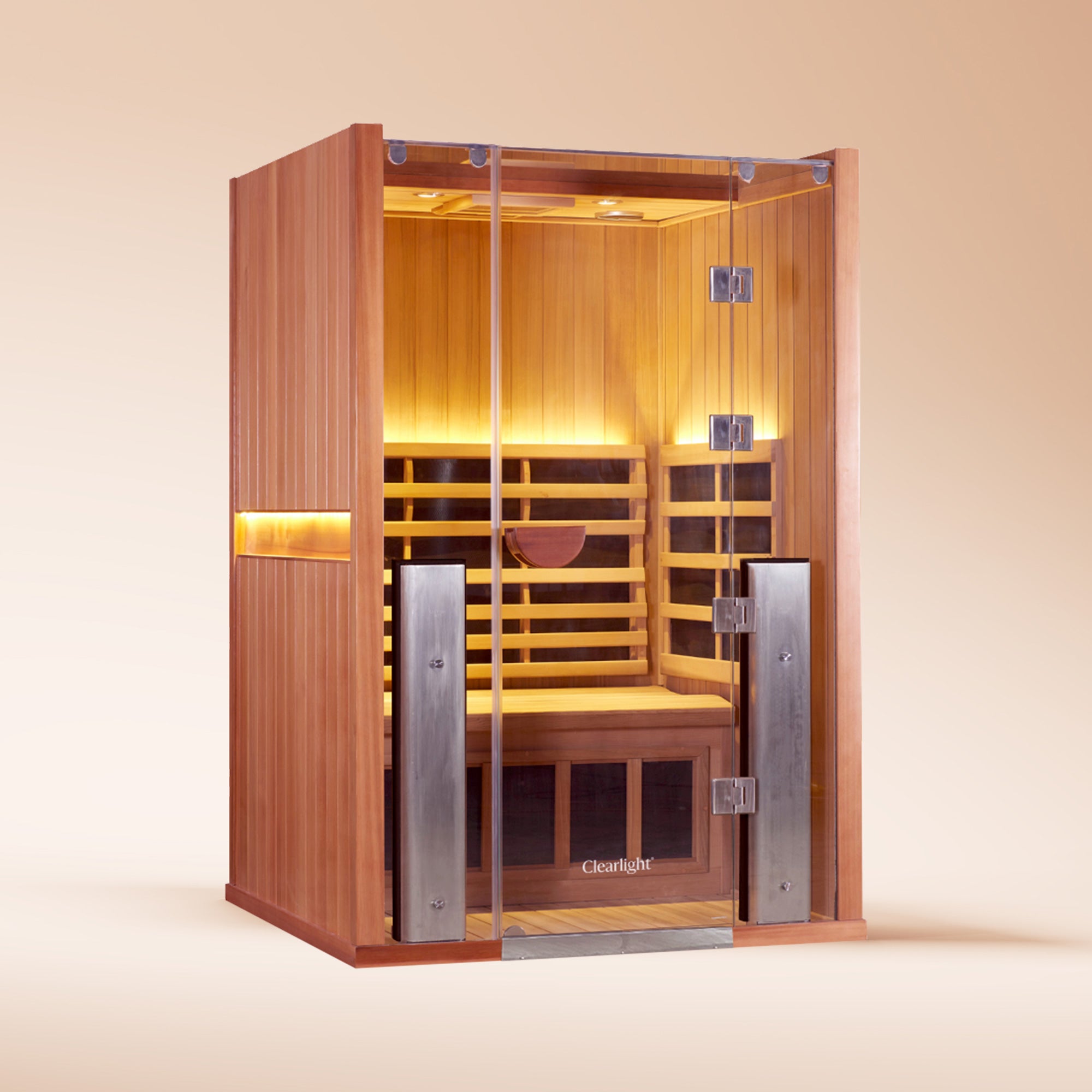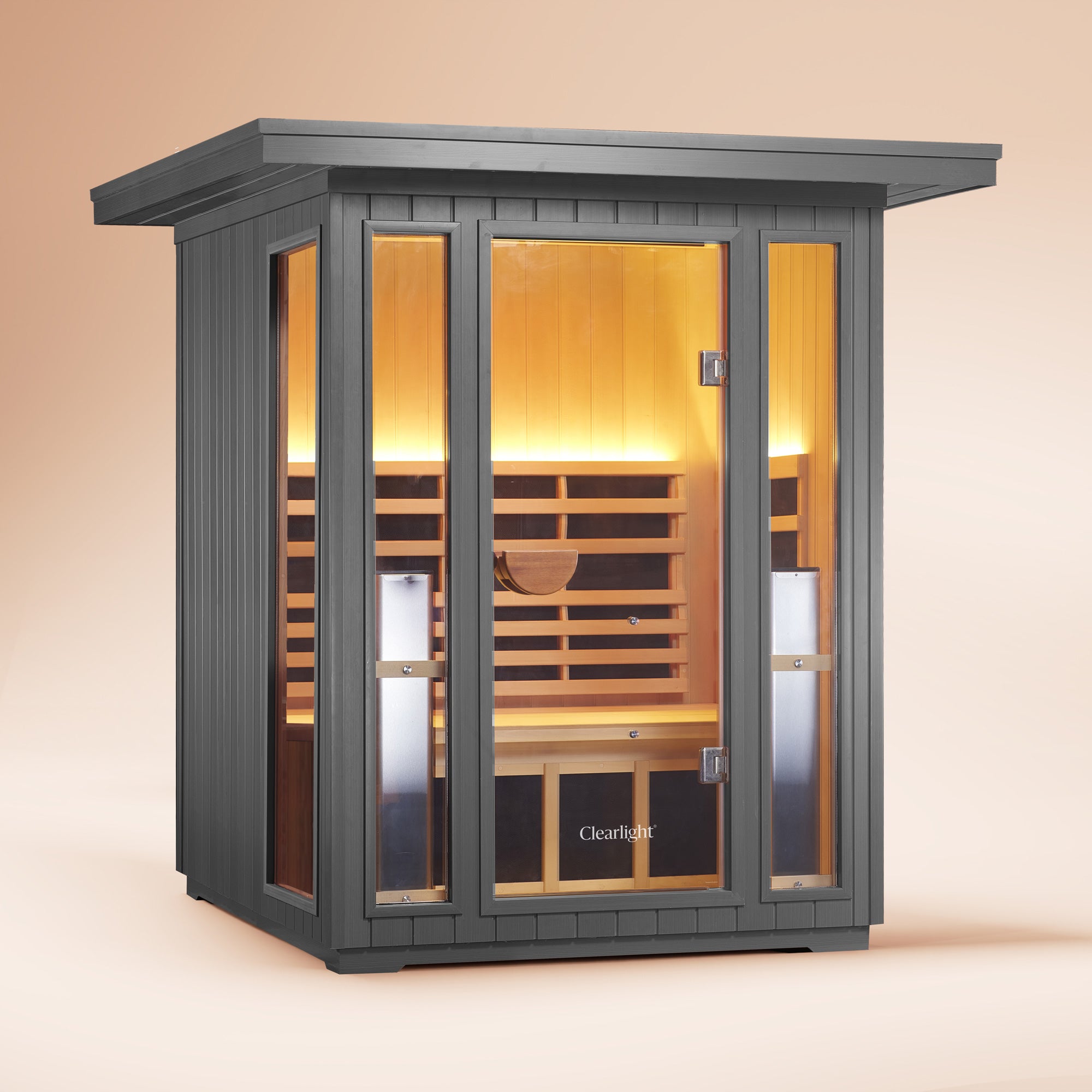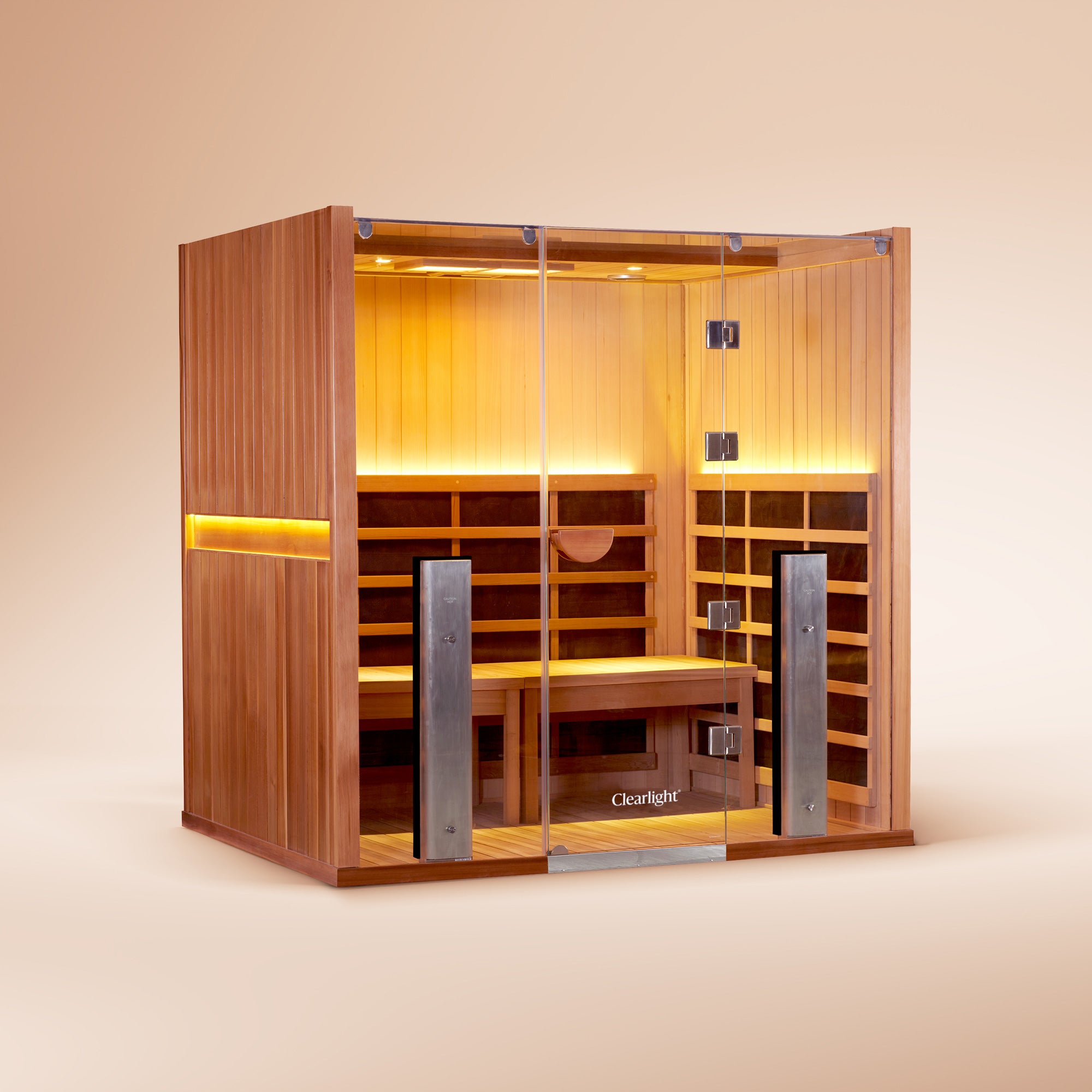Saunas are an extremely promising tool for stress reduction. Many people will ask how much time they should spend inside a sauna to reduce stress. In this blog post, I´ll cover the answer to that question from different perspectives.
Saunas For Sleep Quality And Stress Relief Benefits
A recent 2019 study explored what effects people would get from regular sauna visits. The study participants had to complete a 71-item questionnaire about their experiences using an infrared sauna.
The main reasons the study participants visited the saunas were relaxation (stress relief), decreasing pain, and to socialise with other people (1). More than 80% of people also experienced sleep quality benefits after a sauna visit.
As sleep quality is extremely closely linked to mental well-being, this benefit for sleep quality is very welcome (2; 3; 4; 5). Even if you don´t have mental well-being issues, sleep deprivation puts you at much greater risk for depression and anxiety.
People who visited a sauna between 5 and 15 times per month also had slightly better mental health scores. Overall, saunas were exceptionally well tolerated. Very slight side effects only occurred in rare cases and were never dangerous. Dizziness, headaches, and dehydration were some of the most common side effects.
So, for most people, saunas are an auspicious tool to feel better overall. I´ll explore that dynamic in more detail in the rest of this blog post. Suffice it to say that if you want the maximum mental well-being benefits, it's safe to say that 3-4 sauna sessions per week are best. Ensure you stay at least 20 minutes inside an infrared sauna for the best results.
Also, if you´re interested in deep dives on related topics, I recommend exploring earlier blog posts I wrote on these topics, such as:
- How Infrared Saunas Can Reduce Stress
- How Infrared Saunas Helped Overcome My Anxiety
- Why An Infrared Sauna Anxiety Symptom Management Habit Makes Sense
- Can An Infrared Sauna Help You Sleep Better?
- The Infrared Sauna Depression Benefits You Might Not Know About
- The Power Of Solitude In An Infrared Sauna
- Infrared Sauna Use As A Treatment For Depression
I´ve also written a very extensive overview page on all the infrared sauna health benefits if you´re interested in that. In that blog you´ll read about other topics such as infrared saunas and joint health, heart and blood vessel health, and diabetes support, among others.
Next up, let´s explore the effects infrared saunas can have on a health condition that affects many people nowadays - depression:
Inflammation, Whole-Body Hyperthermia, And How Long To Use An Infrared Sauna To Counter Depression
Studies published in the last few years have found a powerful link between using an infrared sauna and depression in a few cases (6; 7). A very specific ¨whole body hyperthermia¨ protocol is used in these studies.
Let me explain what that protocol means:
Typically, using an infrared sauna increases what is called your ¨core body temperature¨by significantly. But, eventually, you´re getting too hot and will have to exit the sauna for a while. With whole-body hyperthermia, a unique setup is used. The head - the weakest link if your goal is to get your core body temperature up big time - is cooled during the infrared sauna session.
The core of your body and extremities are then heated to nearly maximum tolerance. These whole-body hyperthermia sessions are really intense. In the scientific studies I just quoted, the Sauna Dome of Clearlight® Saunas is used. That Dome is a portable sauna model whereby the heater panels are located very close to the body, leading to maximal core body temperature increases.
The results?
Whole-body hyperthermia using the Clearlight® Saunas Dome leads to an extremely fast-acting effect on depression in many cases. Often, a single whole-body hyperthermia session is sufficient for some people to no longer be considered ¨clinically depressed¨
The problem, however, is that you cannot complete this protocol by yourself as the temperature increases are quite extreme. So I only recommend whole-body hyperthermia under medical supervision.
For depression, the studies used an average of 80 minutes to achieve a sufficient core body temperature increase for an antidepressant effect. The time spent in the sauna ranged from 60 to 110 minutes (almost two hours) for different study participants.
And overall, although many participants with clinical depression saw rapid results, these results also lasted over time. Even after more extended follow-up periods by the researchers, the depression did not return in many cases.
But why does whole-body hyperthermia have such a significant effect on depression? There's strong evidence that depression is interlinked with excessive inflammation in many cases (8; 9; 10). Whole-body hyperthermia brings that inflammation down big time, which then has a strong effect on depression.
Evidence exists that in some people with depression that inflammatory response in the immune system has gone haywire (11: 12: 13; 14; 15). Talk to your physician if you want more information on this topic.
Next up, let´s explore what saunas do for your stress hormone levels:
How Long Should You Sauna To Lower Stress Hormone Levels And Feel Better?
Spending merely 15 minutes inside a sauna can lower your stress hormone levels (16). For that goal, a traditional sauna at 95 degrees Celsius was used (203 Fahrenheit).
However, the case can be made that infrared saunas offer a far superior result for lowering stress. Several reasons can be given for that conclusion:
- Far infrared saunas are far gentler than regular saunas at they have a maximum temperature of 55 degrees Celsius (131 Fahrenheit). The sauna won’t feel extremely hot and the air will be relaxing for your airways instead of burning them.
- The different types of infrared light penetrate your body. That light thereby affects cellular function through many different mechanisms. In plain English, different types of far and near infrared act like a type of nutrient in your cells.
- To many people, spending time in an infrared sauna feels exceptionally relaxing.
Depending on the study you refer to, infrared saunas activate the ¨rest and digest¨ part of the nervous system (17; 18; 19). That ¨rest and digest¨ part is called the ¨parasympathetic nervous system¨.
That parasympathetic nervous system can be opposed to the sympathetic nervous system. The sympathetic nervous system is often called the ¨fight, flight, or freeze¨ nervous system - and active during stress.
And, while in the short-term, the sympathetic nervous system is activated during a sauna session, after the session is over, the parasympathetic becomes more predominant than before. Researchers can measure the increased activation of the parasympathetic nervous system by the ¨Heart Rate Variability¨(HRV=. That HRV is how much the interval between your heartbeats differs between beats - a higher HRV signifies deeper relaxation in the nervous system.
Overall breathing capacity (FEV1) also increases over time with sauna sessions. Higher FEV1 is also a sign of greater parasympathetic activation. Overall, these results are extremely promising for stress reduction in society.
For the best stress-reduction results, you’ll have to use a sauna at least thrice weekly for six weeks. The duration of the sessions was 30 minutes in total (with breaks).
It´s essential to emphasise that a sauna habit creates far superior results than a few sessions here or there. So instead of focusing on quick results, ensuring you’re creating a long-term sauna habit where you use a sauna three to four times a week will pay off big time in the long run.
Hopefully, you now understand that frequent sauna sessions help you deal with chronic stress and even clinical depression in some cases. Next, let´s explore how stress and anxiety affect health and why this topic is so problematic today.
How Chronic Stress And Anxiety Affect Health
An extreme amount of recent science explores the many problems of chronic stress and chronic anxiety on health in modern society (20; 21; 22; 23; 24; 25; 26; 27). Stress and/or anxiety, when they are persistent, affect almost any process in the human body.
Cellular health goes down, organs deteriorate quicker than usual, and your overall risk of many other diseases, such as heart and blood vessel problems, cancers, depression and burnout, goes up.
Commonly, humans used to be hunter-gatherers that would only be exposed to stress on a temporary basis. An unexpected meeting with predators would be an example of such temporary stress. But because the human brain can imagine poor outcomes and ruminate about them, the chronic stress and anxiety that are so pervasive in society are a new phenomenon from an evolutionary perspective. Our human brain was only meant to release stress hormones such as adrenaline and cortisol during a temporary danger, and not 24/7 when we imagine a vital presentation we might have to give three weeks from now.
Chronic stress and chronic anxiety can even change structures of the brain. The prefrontal cortex - which can be conceived as the CEO of your brain that ought to be mostly in control - can lose some of its required activations. Other areas, such as the hippocampus that’s involved in memory, can even become smaller. And emotional areas, such as the ¨amygdala¨ - which is like an alarm bell in your brain - can become more frequently activated and grow in size even.
And in developing nations, up to 35% of people experience an anxiety disorder at some time in their lives. Up to 70% of people with chronic diseases, moreover, currently also experience chronic stress.
So, the relaxing effects that infrared saunas can have by lowering your stress hormone levels long-term and activating your rest and digest nervous system are extremely helpful. Stress management has become more critical than ever in this quickly-moving society.
Let´s explore another part of this dynamic:











How Long Should You Sauna For Skin Health Benefits?
How Long Should You Sauna For Muscle Recovery?